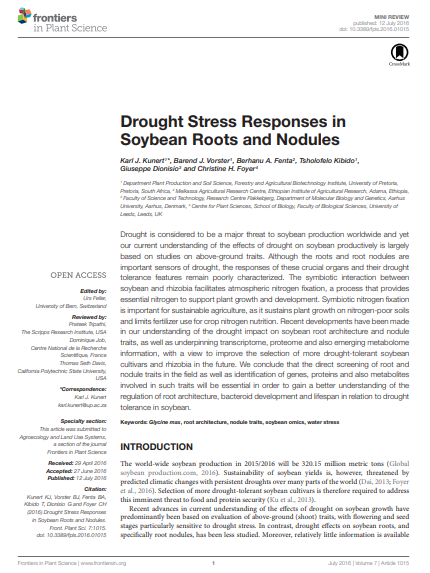Drought Stress Responses in Soybean Roots and Nodules
Summary
Drought is considered to be a major threat to soybean production worldwide, yet our current understanding of the effects of drought on soybean productively is largely based on studies of above-ground traits. Although the roots and root nodules are important sensors of drought, the responses of these crucial organs and their drought tolerance features remain poorly characterized. The symbiotic interaction between soybean and rhizobia facilitates atmospheric nitrogen fixation, a process that provides essential nitrogen to support plant growth and development. Symbiotic nitrogen fixation is important for sustainable agriculture, as it sustains plant growth on nitrogen-poor soils and limits fertilizer use for crop nitrogen nutrition. Recent developments have been made in our understanding of drought impact on soybean root architecture and nodule traits, as well as underpinning transcriptome, proteome, and also emerging metabolome information, with a view to improve the selection of more drought-tolerant soybean cultivars and rhizobia in the future. We conclude that the direct screening of root and nodule traits in the field as well as identification of genes, proteins, and also metabolites involved in such traits will be essential in order to gain a better understanding of the regulation of root architecture and bacteroid development and lifespan in relation to drought tolerance in soybean.
Open resource Download resource Access resource on external site

